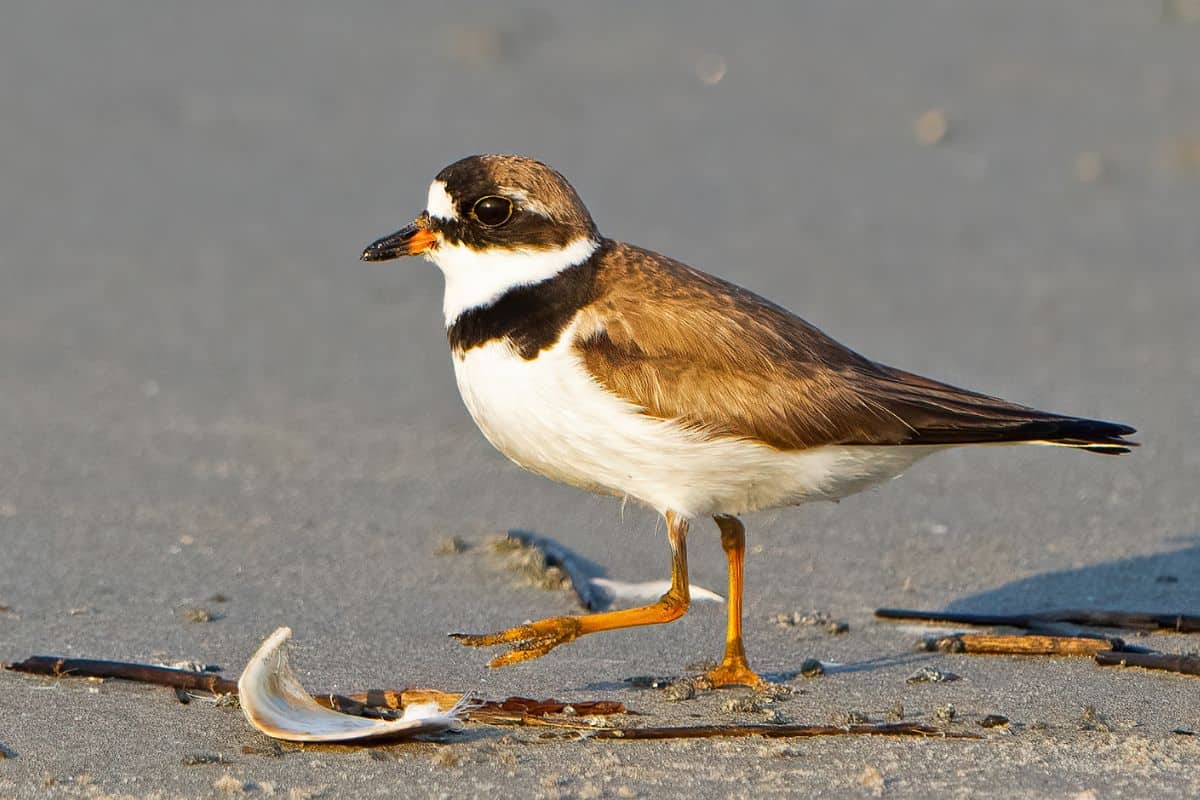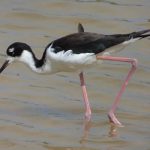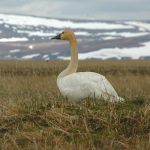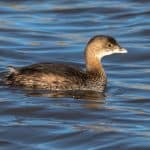Common Name: Semipalmated Plover
Scientific Name: Charadrius semipalmatus| Size | Diet | Range in Hawaii | Status in Hawaii |
|---|---|---|---|
| 6 in. - 7 in. | insects, worms, crustaceans, and mollusks | Kaua'i, O'ahu, Moloka'i, Maui, and Big Island | Least Concern |
Semipalmated plover, also known as Charadrius semipalmatus, is a small shorebird that is a common sight during its breeding season in the northern regions of North America. However, did you know that this bird is also a non-breeding visitor and occasional winterer in Hawaii?
Despite its small size, the semipalmated plover has a fascinating life history, including its unique migration patterns and habitat preferences. In this article, we will explore the world of the semipalmated plover and discover what makes this bird so special, especially when it visits the beautiful islands of Hawaii.
Semipalmated Plover
Appearance
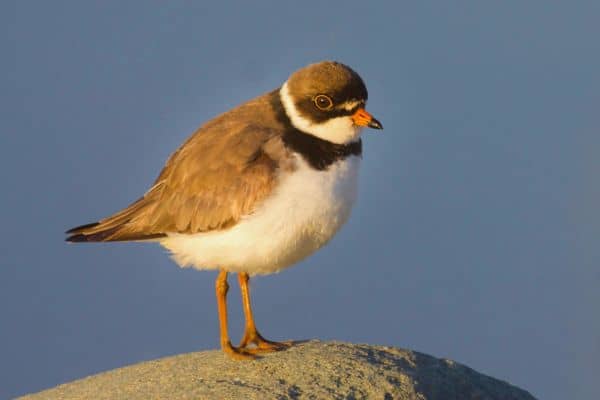
The Semipalmated Plover, characterized by its distinctive appearance, is a small shorebird measuring around 6 to 7 inches (15 to 18 centimeters) in length. It has a compact and plump body with a short neck and a small, rounded head. The bird’s upperparts are brownish-gray, while the underparts are pale white.
Its face displays a black band that extends from the forehead through the eye, giving it a striking appearance. The Semipalmated Plover’s legs are relatively short and its feet are partially webbed, which is where it derives its name “semipalmated.” This unique combination of features makes the Semipalmated Plover easily recognizable in its coastal habitats.
Diet
The Semipalmated Plover has a diverse diet that primarily consists of small invertebrates found along coastal areas. It feeds on a variety of prey, including insects, worms, crustaceans, and mollusks. Using its sharp beak, the plover probes the sand or mud in search of tasty morsels.
It also exhibits a distinctive feeding behavior known as “run-stop-peck,” where it swiftly runs, pauses, and then pecks at its prey. This feeding strategy allows the Semipalmated Plover to efficiently capture and consume its preferred food sources, adapting to the dynamic environments it inhabits.
Nesting
The Semipalmated Plover engages in nesting behavior that is both fascinating and adaptive. It typically constructs its nest on the ground, in open areas with sparse vegetation such as sandy or gravelly beaches, salt marshes, or riverbanks.
The nest is a simple depression lined with small pebbles, shell fragments, or bits of vegetation. The female Semipalmated Plover takes the lead in nest-building, while the male assists in defending the territory.
Once the nest is prepared, the female lays a clutch of typically four eggs, which are well-camouflaged to blend with the surrounding environment. Both parents take turns incubating the eggs, which usually hatch after about three to four weeks. After hatching, the precocial chicks are capable of leaving the nest and foraging for themselves shortly after birth.
Semipalmated Plovers are known for their protective nature, and they will vigorously defend their nest and young against potential threats by displaying distraction behaviors and vocalizing warnings. This nesting strategy allows the Semipalmated Plover to successfully raise its offspring in diverse habitats, ensuring the continuation of their species.
Behavior
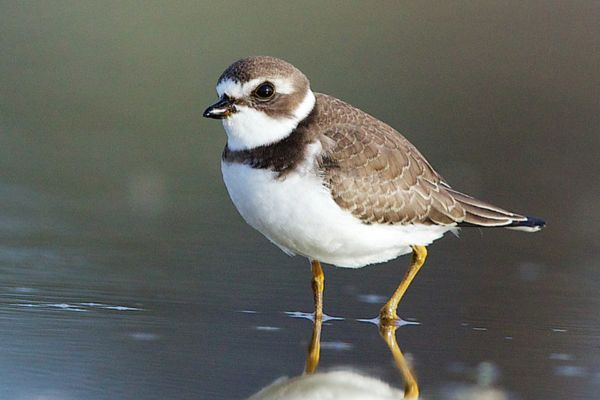
The Semipalmated Plover exhibits fascinating behavior that reflects its adaptability and resourcefulness. This small shorebird is known for its energetic foraging style, often seen running along sandy beaches or muddy shorelines, stopping abruptly to peck at prey items it finds in the sand or mud.
Semipalmated Plovers are highly social birds, often seen in small groups or larger flocks during migration. They engage in various social behaviors, including calling to communicate with one another and engaging in courtship displays during the breeding season. These displays involve aerial flights, wing waving, and vocalizations, all aimed at attracting a mate.
During migration, the Semipalmated Plover undertakes remarkable long-distance journeys, traveling from its breeding grounds in the Arctic to its wintering grounds in South America. This demonstrates their exceptional navigational abilities and endurance.
When it comes to nesting, Semipalmated Plovers are protective and vigilant parents. They defend their nest site from potential threats, employing distraction displays to lure predators away from the nest. Both parents take turns incubating the eggs and caring for the chicks once they hatch.
Habitat
The Semipalmated Plover is a shorebird that inhabits a wide range of coastal habitats throughout its range. It can be found in diverse environments such as sandy beaches, mudflats, salt marshes, and riverbanks. These birds are highly adaptable and can also be seen in artificial habitats like coastal ponds, flooded fields, and even sewage treatment areas.
During the breeding season, Semipalmated Plovers choose open areas with sparse vegetation in the Arctic tundra and northern regions of North America. They construct their nests on the ground, often near bodies of water. In winter, they migrate to coastal areas of South America, where they utilize similar habitats along beaches and estuaries.
These plovers are well-suited to their chosen habitats, utilizing their camouflage to blend with the sand or mud, making them difficult to spot. Their feeding behavior is adapted to their coastal habitat, as they forage for small invertebrates in the sand or mudflats, taking advantage of the abundance of food resources found in these areas.
The Semipalmated Plover’s habitat preferences make it a common sight in coastal regions, whether it’s during migration or while breeding or wintering. Their ability to adapt to various coastal habitats allows them to thrive and successfully complete their annual cycle of migration and reproduction.
Range
The Semipalmated Plover is a non-breeding visitor and occasional winterer in Hawaii. It has been recorded on several islands including Kaua’i, O’ahu, Moloka’i, Maui, and Hawai’i. However, there are no records of Semipalmated Plovers from Ni’ihau, Lana’i, or Kaho’olawe.
Notable sightings include high counts at Waipi’o, O’ahu, and sightings at Kealia NWR, Puunene, and Kanaha Pond State Sanctuary. The earliest fall arrival was on June 29th, and the latest spring date was on June 1st.
Conservation Status
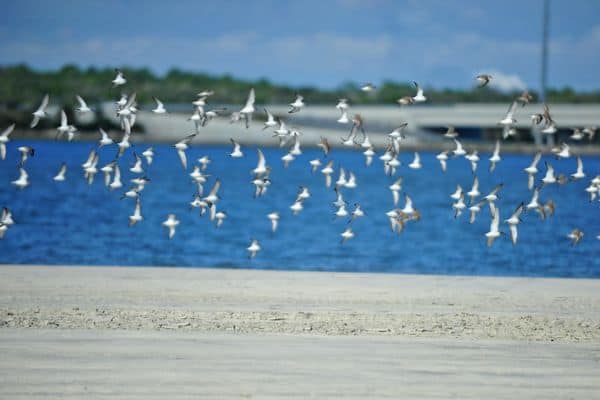
The Semipalmated Plover is currently classified as a species of “Least Concern” on the IUCN Red List of Threatened Species. This indicates that overall, the population of Semipalmated Plovers is stable and not facing significant conservation concerns at a global level.
However, it is important to note that local populations and specific habitats may face certain threats. Factors such as habitat loss and degradation, disturbance from human activities, climate change, and predation can impact the breeding success and overall survival of these birds.
Conservation efforts focus on protecting and preserving the coastal habitats that Semipalmated Plovers rely on during their breeding, migration, and wintering periods. These include maintaining the integrity of beaches, mudflats, and salt marshes, as well as implementing measures to reduce disturbance and prevent the destruction of nesting sites.
Interesting Facts
1. Unique foot adaptation
Despite its name, the Semipalmated Plover does not have fully webbed feet like other plovers. Instead, it has partial webbing between its toes, giving it the “semipalmated” characteristic. This adaptation allows the bird to navigate diverse coastal habitats, including sandy beaches and muddy areas.
2. Impressive migration
The Semipalmated Plover embarks on remarkable long-distance migrations. Breeding in the Arctic regions of North America, it undertakes a journey of thousands of miles to reach its wintering grounds in South America. These incredible migratory feats highlight their endurance and navigational abilities.
3. Expert foragers
Semipalmated Plovers have a varied diet, feeding primarily on insects, crustaceans, worms, and small mollusks. They employ a distinctive foraging behavior known as “run-stop-peck,” swiftly running along the shoreline or mudflats, pausing to peck at prey items they spot. Their foraging techniques showcase their adaptability to coastal environments.
4. Social behavior
Semipalmated Plovers are social birds, often seen in small groups or larger flocks during migration. They communicate through various calls, including distinctive alarm calls to alert others of potential dangers. Their social behavior adds to the vibrant dynamics of coastal bird communities.
Frequently Asked Questions
1. Are Semipalmated Plovers social birds?
Yes, Semipalmated Plovers are social birds. They are often seen in small groups or larger flocks during migration. They communicate through various calls and engage in social behaviors within their species.
2. How can I spot a Semipalmated Plover?
Look for small shorebirds with a brownish-gray upper body, white underparts, and distinctive black neckbands or “collars.” They are often found near coastal areas, including sandy beaches, mudflats, and tidal zones.
3. Are Semipalmated Plovers monogamous?
Yes, Semipalmated Plovers typically form monogamous pairs during the breeding season. Both parents take turns incubating the eggs and caring for the young after hatching.
4. What does the term “semipalmated” in Semipalmated Plover mean?
The term “semipalmated” refers to the partial webbing between the toes of the Semipalmated Plover. Unlike fully webbed feet, this adaptation allows them to navigate diverse coastal habitats without hindrance.
